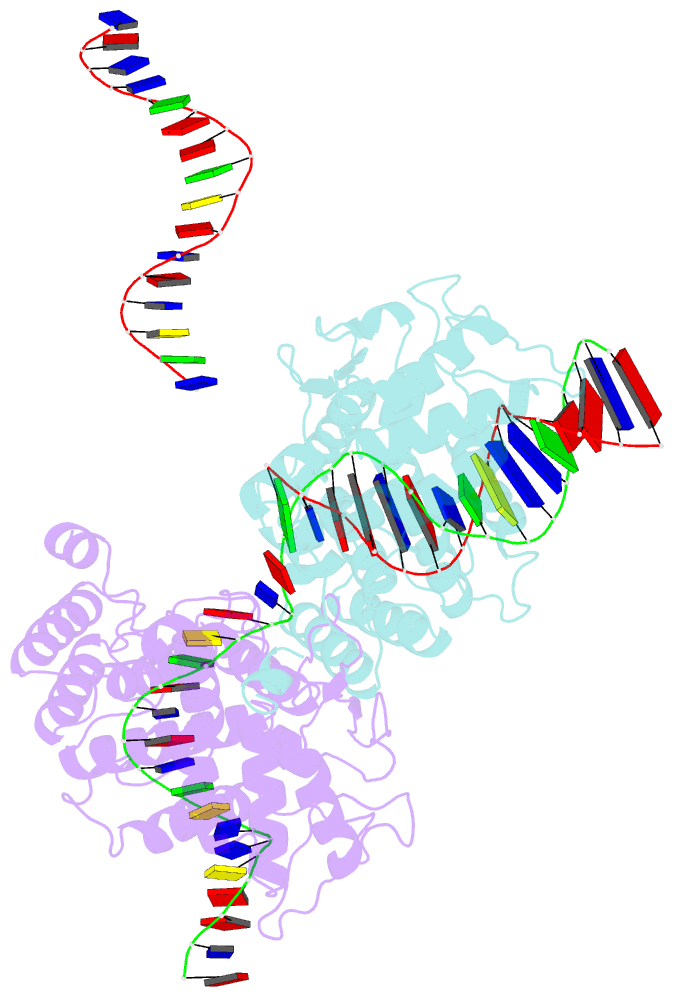Summary information and primary citation
- PDB-id
- 1kbu; SNAP-derived features in text and JSON formats;
DNAproDB
- Class
- hydrolase, ligase-DNA
- Method
- X-ray (2.2 Å)
- Summary
- Cre recombinase bound to a loxp holliday junction
- Reference
- Martin SS, Pulido E, Chu VC, Lechner TS, Baldwin EP (2002): "The Order of Strand Exchanges in Cre-LoxP Recombination and its Basis Suggested by the Crystal Structure of a
Cre-LoxP Holliday Junction Complex." J.Mol.Biol., 319, 107-127. doi: 10.1016/S0022-2836(02)00246-2.
- Abstract
- Cre recombinase uses two pairs of sequential cleavage and religation reactions to exchange homologous DNA strands between 34 base-pair (bp) LoxP recognition sequences. In the oligomeric recombination complex, a switch between "cleaving" and "non-cleaving" subunit conformations regulates the number, order, and regio-specificity of the strand exchanges. However, the particular sequence of events has been in question. From analysis of strand composition of the Holliday junction (HJ) intermediate, we determined that Cre initiates recombination of LoxP by cleaving the upper strand on the left arm. Cre preferred to react with the left arm of a LoxP suicide substrate, but at a similar rate to the right arm, indicating that the first strand to be exchanged is selected prior to cleavage. We propose that during complex assembly the cleaving subunit preferentially associates with the LoxP left arm, directing the first strand exchange to that side. In addition, this biased assembly would enforce productive orientation of LoxP sites in the recombination synapses. A novel Cre-HJ complex structure in which LoxP was oriented with the left arm bound by the cleaving Cre subunit suggested a physical basis for the strand exchange order. Lys86 and Lys201 interact with the left arm scissile adenine base differently than in structures that have a scissile guanine. These interactions are associated with positioning the 198-208 loop, a structural component of the conformational switch, in a configuration that is specific to the cleaving conformation. Our results suggest that strand exchange order and site alignment are regulated by an "induced fit" mechanism in which the cleaving conformation is selectively stabilized through protein-DNA interactions with the scissile base on the strand that is cleaved first.





